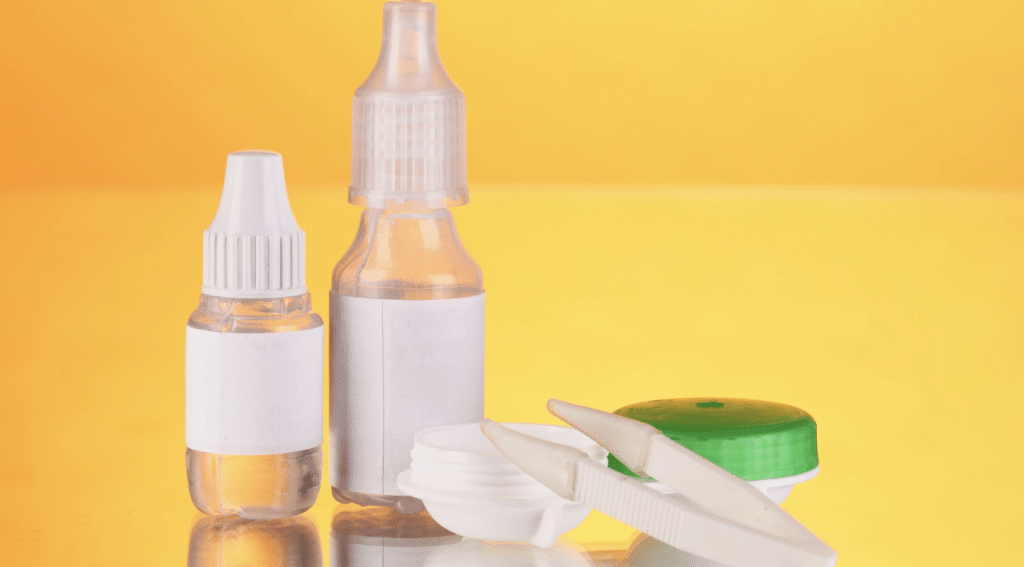Glaucoma is one of the leading causes of irreversible blindness worldwide, affecting over 80 million people worldwide. Experts have found that prostaglandin analogs are the most commonly prescribed treatments due to their effectiveness in lowering intraocular pressure. Two popular options in this category are Bimatoprost and Latanoprost.
Bimatoprost and Latanoprost are eye drops frequently used to manage glaucoma. They also have cosmetic applications, such as enhancing eyelash growth. Both medications work similarly, yet they differ in their chemical structure, efficacy, and side effect profiles, making the choice between them important.
In this article, we will compare Bimatoprost and Latanoprost, examining their benefits and differences and determining which might be the better option for your needs.
Key Takeaways
- Bimatoprost and Latanoprost are prostaglandin analogs commonly used to lower intraocular pressure and manage glaucoma and ocular hypertension. They also have cosmetic applications, such as enhancing eyelash growth.
- Bimatoprost increases the outflow of aqueous humor, reducing pressure buildup within the eye, while Latanoprost improves fluid drainage without affecting fluid production in the eye.
- Both Bimatoprost and Latanoprost have been shown to lower intraocular pressure effectively. In clinical trials, Bimatoprost has demonstrated additional short-term diurnal IOP reduction and sustained IOP reduction. At the same time, Latanoprost has been found to reduce IOP by 27-35% from baseline values for up to 12 months.
- Common side effects of Bimatoprost include ocular hyperemia, eyelash growth, itching, dry eyes, eye discomfort, and changes in iris pigmentation. Latanoprost is also associated with several common side effects.
About: Medical Spa RX provides medical practices with premium products at the best prices. If you’re looking to buy Bimatoprost Products for your practice, the sales representatives at Medical Spa RX can give you guidance.
Mechanism of Action

Bimatoprost is a prostaglandin analog used primarily to lower intraocular pressure (IOP) in conditions like glaucoma and ocular hypertension. High IOP can damage the optic nerve, potentially leading to vision loss. Bimatoprost increases the outflow of aqueous humor, the fluid inside the eye, through the eye’s drainage pathways. This enhanced fluid outflow reduces the buildup of pressure within the eye, helping to protect vision.
Latanoprost is another prostaglandin analog that also lowers eye pressure by improving the outflow of fluid through the trabecular meshwork and uveoscleral pathways. This medication mimics the action of the body’s natural substances that regulate eye pressure, facilitating better fluid drainage without altering the production of fluid in the eye.
Like Bimatoprost, Latanoprost is commonly prescribed to manage elevated IOP in glaucoma and ocular hypertension, offering a similar approach to pressure reduction.
Efficacy

Bimatoprost has been extensively studied for its efficacy in lowering intraocular pressure (IOP) and promoting hair growth. In a randomized, multicenter clinical trial, patients with glaucoma or ocular hypertension who switched from Latanoprost to Bimatoprost eye drops showed a significant reduction in IOP. The study found that Bimatoprost achieved a more significant additional short-term diurnal IOP reduction than Travoprost.
Another study demonstrated that a single administration of Bimatoprost sustained-release (SR) implant effectively reduced IOP for up to 12 months in nearly 40% of patients. Additionally, using Bimatoprost for eyelashes has shown promising results in dermatology, particularly in treating alopecia and hypotrichosis.
Latanoprost is also well-documented for its efficacy in reducing IOP in patients with open-angle glaucoma or ocular hypertension. Clinical trials have shown that topical application of Latanoprost 0.005% once daily can reduce IOP by 27-35% from baseline values for up to 12 months.
Another long-term observational study involving patients switched to a Latanoprost/timolol fixed combination reported sustained IOP reduction and stable optic disc parameters over 24 months. Latanoprost has also been evaluated in combination therapies, such as with netarsudil, to enhance its IOP-lowering effects.
Side Effects

Bimatoprost is generally well-tolerated, but like all medications, it can cause side effects. The most frequently reported Bimatoprost side effects include ocular hyperemia (redness of the eye), growth of eyelashes, and itching. Some patients may also experience dry eyes, eye discomfort, or a sensation of a foreign body in the eye.
Less commonly, Bimatoprost can cause changes in iris pigmentation, leading to a gradual increase in brown pigmentation of the iris, which may be permanent.
Latanoprost is associated with several common side effects, primarily affecting the eyes. These include conjunctival hyperemia (redness of the eye), increased pigmentation of the iris, and eyelash changes such as increased length, thickness, and number. Other side effects may include eye irritation, a burning sensation upon application, and blurred vision.
In rare cases, Latanoprost can cause macular edema, particularly in patients with predisposing risk factors.
Patient Response and Preferences
Patients who use Bimatoprost often talk about how well it works. They say it does a great job of lowering eye pressure. Many reach their target IOP of 17 mm Hg or less in the morning.
We see Latanoprost is also well-talked about by patients. Many find it effective in reducing eye pressure. With a 16% rate of adverse events, it’s seen as gentler on the eyes compared to some alternatives. Below are some patient experiences with these two treatments:
- “I’m 84, if that matters. About a year ago, I experienced a sudden (over six months) simultaneous increase in intraocular pressure from about 18 to 31. I started using Bimatoprost 0.01%, one drop daily at night. IOC pressure dropped to 16-18 and has stayed in that range. No side effects or discomfort.”
- “After trying just about all the drops out there, this was the one that really worked in lowering the pressure in my eye without any bad side effects.”
- “Helps me so much, my pressure went down from 18 and 19 to 8 and 9. I am very happy with it. Since 2014.”
Choosing the Right Medication
When deciding between Bimatoprost and Latanoprost, several factors should be taken into account to ensure the most effective and suitable treatment for the patient:
- Efficacy: Both medications effectively lower intraocular pressure (IOP) in patients with glaucoma or ocular hypertension. However, individual responses can vary. Some studies suggest that Bimatoprost may provide a slightly greater reduction in IOP than Latanoprost.
- Side Effects: The side effect profiles of these medications can influence the choice. Bimatoprost side effects commonly include ocular hyperemia, eyelash growth, and potential changes in iris pigmentation. Latanoprost also causes similar side effects, such as conjunctival hyperemia and eyelash changes, but may have a higher incidence of iris pigmentation changes.
- Patient Preferences: Some patients may prefer one medication over the other based on their experience with side effects or the convenience of use. For instance, if a patient is particularly concerned about cosmetic changes like eyelash growth or iris pigmentation, this might sway their choice.
- Cost and Availability: The cost of medication and insurance coverage can be significant factors. Bimatoprost and Latanoprost may differ in price and availability depending on the region and healthcare system.
- Comorbid Conditions: Other medical conditions can also influence the choice. For example, patients with a history of macular edema might need to avoid Latanoprost because it can exacerbate this condition.
- Long-term Use: It is crucial to consider long-term effects and patient adherence to the treatment regimen. Both medications are typically used long-term, and patient comfort and satisfaction with the medication can impact adherence.
Conclusion
Choosing between Bimatoprost and Latanoprost depends on your specific needs. Bimatoprost may offer slightly better pressure reduction but can cause more redness, while Latanoprost is effective with a generally milder side effect profile.
Consult with your doctor to determine which medication is best for you. Both are safe, effective options for managing glaucoma and ocular hypertension, helping to maintain eye health.
FAQs
1. What are Bimatoprost and Latanoprost?
Bimatoprost and Latanoprost are medications used to lower intraocular pressure in patients with glaucoma or ocular hypertension. They are also known for promoting eyelash growth and increasing iris pigmentation.
2. How do they work?
Both work by increasing the outflow of fluid from the eyes, which lowers the pressure within the eye.
3. Are there any significant differences between Bimatoprost and Latanoprost?
While both Bimatoprost and Latanoprost effectively reduce intraocular pressure, Bimatoprost may offer a slightly more significant reduction and is also more commonly associated with eyelash growth.
References
Glaucoma. Johns Hopkins Medicine. https://www.hopkinsmedicine.org/health/conditions-and-diseases/glaucoma
Lim, K. S., Nau, C. B., O’Byrne, M. M., Hodge, D. O., Toris, C. B., McLaren, J. W., & Johnson, D. H. (2008). Mechanism of action of Bimatoprost, Latanoprost, and travoprost in healthy subjects. A crossover study. Ophthalmology, 115(5), 790–795.e4. https://doi.org/10.1016/j.ophtha.2007.07.002
Weizer, J. S., & Asrani, S. (2023). Glaucoma medication. In StatPearls. StatPearls Publishing. https://www.ncbi.nlm.nih.gov/books/NBK540978/





















